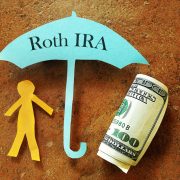Stretch Your Self-Directed IRA Funds by Partnering Them
One of the benefits of opening a Self-Directed IRA is that it allows you to invest in alternative assets that you already understand. Many retirement investors choose real estate for just that reason. It’s a tangible asset with which they are familiar and have a high level of comfort. However, real estate can be costly, and some investors might not have a sufficient balance in their IRA to purchase it on their own. But by partnering with other entities, you can raise the amount needed to buy anything from an individual home to a commercial property.
Partnering is an excellent way to accumulate funds to purchase a property and also to help mitigate risk. Here are five strategies to consider, any of which could help you reach your real estate goals:
- Partner with another Self-Directed IRA
Your Self-Directed IRA may partner with any other IRA to purchase real estate. The partnered IRAs then divide up the income and expenses according to the percentage that is owned by each account.
Those of you who have used your Self-Directed IRA to invest in real estate probably know that disqualified persons are not allowed to do business with the real estate in your IRA. However, you might not be aware that your Self-Directed IRA may partner with anyone at the time of initial purchase, which does include a disqualified person. So, when you make that initial purchase, you may partner with your spouse, a parent, or one of your children.
Keep in mind that this rule only applies to the initial purchase, and no further business may be conducted with a disqualified person. That means you may partner with your brother’s IRA to buy the property, but you cannot hire his electrical business to re-wire it.
- Partnering with funds that are not in a Self-Directed IRA
The funds that are going to be used to purchase real estate do not all have to come from a tax-advantaged retirement account. You can also use your personal savings, or you may partner your Self-Directed IRA funds with money from someone else’s personal savings account.
As in the last example, the funds for the initial purchase may come from an otherwise disqualified person such as a spouse or parent.
- Partnering with Multiple Parties
If you are going to think big with your real estate investments, you might need more funds than two parties can provide. For instance, individual commercial ventures could require millions of dollars to get started. In those cases, you will have to partner with multiple investors to pool enough money.
To reach your goals, you may partner with a combination of Self-Directed IRA and non-IRA funds. There are no limits to the number of entities that may be involved in the purchase, but most financial advisors will tell you to keep it to a manageable number.
- Leverage your property
If you use this strategy, your Self-Directed IRA provides the down payment on the property, and you partner with a lender for the balance. The loan is made to your IRA, and the lender will finance through a non-recourse loan, which means that the lender can only seize the real estate, which it holds as collateral, but none of the funds in your IRA.
Whenever you use a non-recourse loan, your Self-Directed IRA will be subject to unrelated debt finance income (UDFI), which is taxable. The UDFI is determined by calculating the percentage of debt financing required for purchasing the property, and the IRA pays the tax.
- Invest with a limited liability company (LLC)
An LLC is a legal entity, which provides liability protection that is similar to that received through a corporation. Your Self-Directed IRA can be a single member or one of the numerous members, and the LLC owns the property.
Each partner will own an interest in the property proportionate to each investment. That same split applies to all income, expenses, and when the property is sold. The profits go directly into your IRA, while the costs are paid by it. The profits from the sale of the property will be tax-deferred in a Traditional IRA or tax-free with a Roth IRA.
Interested in learning more about Self-Directed IRAs? Contact American IRA, LLC at 866-7500-IRA (472) for a free consultation. Download our free guides or visit us online at www.AmericanIRA.com.









